What is Yoga? Meaning & Origins in Sanatan Dharma
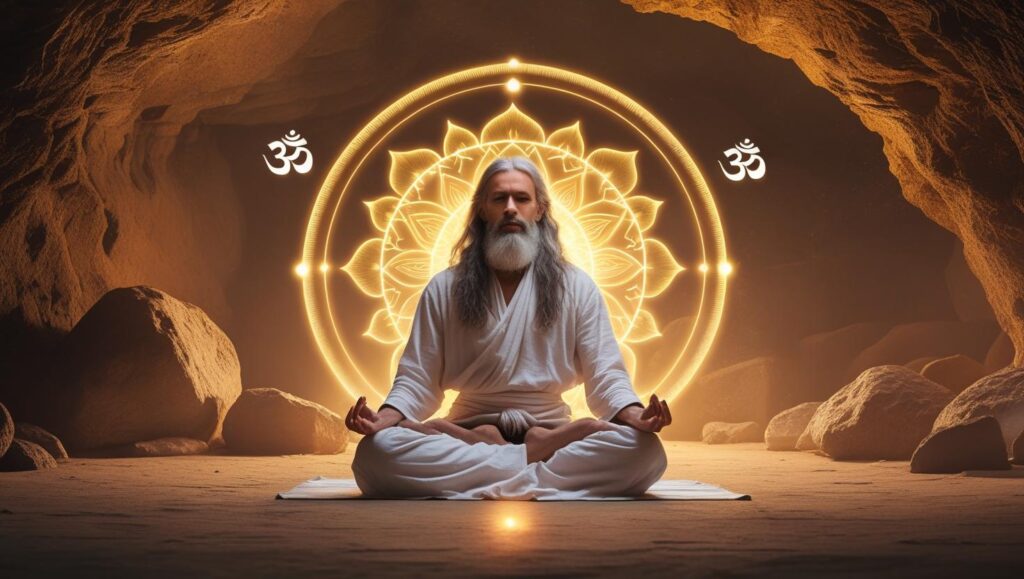
Yoga is not just a workout — it’s a way of life.
If you’ve ever asked yourself what is yoga, it’s time to explore beyond the mat and into the eternal heart of Sanatan Dharma.
In the ancient Vedic worldview, yoga means “union” — the sacred connection of the individual soul (Atman) with the Supreme Consciousness (Brahman). 🕉️
Unlike modern interpretations focused on weight loss or flexibility, real yoga is about self-realization, inner peace, and spiritual freedom (Moksha).
🪔 In Sanatan Dharma, yoga is rooted in timeless truths — not trends.
🔹 Key Yogic Essence from Sanatan Dharma:
- ✅ Yoga = Discipline + Devotion + Awareness
- ✅ Goal = Liberation (Moksha), not just muscles 💪
- ✅ Result = Inner Calm, not outer perfection
🌺 Sanatan Dharma doesn’t promote religion — it reveals eternal truth. And Yoga is one of its most sacred paths.
Table of Contents
🪔 How Did Yoga Begin? A Journey Through Sanatan Time

🕉️ The origin of yoga in Hinduism goes back over 5,000 years, long before yoga studios or YouTube routines existed.
When we ask what is yoga, the answer isn’t just physical postures — it’s an ancient path of spiritual discovery rooted in the Vedic civilization.
📜 Yoga in the Rigveda and Vedic Age
The earliest reference to yoga is found in the Rigveda, humanity’s oldest known scripture. Though the word ‘yoga’ is used in a broader sense, it pointed toward unity, control of the mind, and spiritual discipline.
During the Vedic period, yoga was practiced through:
- Chants (Mantras)
- Yajnas (fire rituals)
- Tapas (austerity & discipline)
Here, yoga meant harmonizing life with cosmic order (Rta), through devotion and self-control.
🔍 Yoga in the Upanishads: The Path to Self-Realization
In the Upanishadic era (~1000 BCE onward), yoga evolved beyond ritual into deep inner exploration.
Texts like the Brihadaranyaka Upanishad and Katha Upanishad describe:
- The Atman (individual soul)
- The Brahman (supreme reality)
- And yoga as the path of inner realization to merge the two
🪷 “The mind is like a chariot; yoga is the art of holding its reins.” — Katha Upanishad
This was yoga not as exercise, but as enlightenment.
📚 Classical Age of Yoga: Sage Patanjali and the Yoga Sutras
Fast forward to ~200 BCE, Sage Patanjali compiled and codified yogic wisdom into the legendary Yoga Sutras — one of the foundational texts of Classical Yoga.
Key concepts from the Yoga Sutras:
- Ashtanga Yoga (Eightfold Path): yama, niyama, asana, pranayama, pratyahara, dharana, dhyana, samadhi
- Yoga as a scientific, step-by-step path to spiritual liberation (Moksha)
- Patanjali defined yoga as: “Yogas chitta vritti nirodhah” — Yoga is the stilling of the mind’s fluctuations.
🧠 Sage Kapila’s Sankhya Yoga: Foundation of Yogic Philosophy
Another key influence was Sankhya Yoga — a dualistic philosophy taught by Sage Kapila. It laid the theoretical foundation for:
- Mind-body dualism
- Discrimination between Purusha (soul) and Prakriti (nature)
- Importance of detachment and inner clarity in yoga
🕰️ The Evolution of Yoga: A Timeline
| Period | Key Developments |
|---|---|
| Pre-Vedic Age | Early meditative practices in hermitages |
| Vedic Age | Yajnas, mantras, tapas (foundation of yogic lifestyle) |
| Upanishadic Era | Self-inquiry, soul-realization, detachment |
| Classical Age | Codified yoga system by Patanjali |
🙏 Yoga is a Spiritual Inheritance
So the next time someone casually asks what is yoga, you can say this:
Yoga is not a modern discovery — it’s a divine inheritance.
Passed on by enlightened sages, nurtured by ancient scriptures, and preserved in the heart of Sanatan Dharma.
It’s not a trend — it’s a timeless truth. ✨
🪔 Yoga in Ancient Scriptures: A Divine Sanatani Journey
Yoga, as described in ancient scriptures, is not merely about posture or breath — it’s a divine journey of self-discovery.
If you’ve ever asked, “What is yoga in its truest form?”, you’ll find answers across the Vedas, Upanishads, Mahabharata, and Puranas — not in fitness studios, but in scriptural wisdom. 📜
🔹 Yogic Wisdom from the Vedas to the Puranas
🕉️ Here’s how yoga evolved through Sanatan texts:
🌿 Rigveda
- The earliest mention of yoga in Hinduism appears in the Rigveda.
- Talks of Dhyana (meditation) and Pranayama (breath control)
- Yoga here meant tuning into cosmic order (Rta) through focused awareness.
🪷 Upanishads
- Yoga becomes a path of Atma Bodha (self-realization).
- Core practices:
- Vichara (self-inquiry)
- Atma Jyoti (inner light)
- The seeker withdraws senses and merges into the Supreme Self (Brahman)
⚔️ Mahabharata (Bhagavad Gita)
- Lord Krishna reveals the three major yogas to Arjuna:
- Karma Yoga – Yoga of Action
- Bhakti Yoga – Yoga of Devotion
- Jnana Yoga – Yoga of Knowledge
- “Yoga is skill in action.” — Bhagavad Gita (2.50)
📚 Puranas
- Stories of deities practicing yoga:
- Shiva in deep tapas on Mount Kailash
- Vishnu in cosmic sleep (Yoga Nidra)
- Devi as Yogmaya (power of illusion and transcendence)
💫 Real-Life Sanatani Reflection
Imagine this:
It’s early dawn by a serene river. Your eyes are closed, breath steady, and mind still — not to run away from the world, but to become one with it.
That’s real yoga — a Sanatani engagement with life, not escape from it. ☀️
🧘♀️ The Meaning of Yoga in the Vedas
📿 Have you ever wondered — what is the original meaning of yoga in Vedic texts?
The answer lies in the Sanskrit root:
Yoga = Yuj = To unite / To yoke
But this union isn’t just physical, it’s profoundly spiritual — a merger of:
- Body, mind, and soul
- With the universal rhythm of the cosmos
- Through discipline, awareness, and devotion
🕊️ Vedic mantras echo the essence of yoga:
- Harmony between self and nature 🌿
- Balance between stillness and action 🤝
- Unity with the Supreme Divine ✨
🔮 A Sanatani Thought:
“Yoga is not about escaping the world; it’s about embracing it with clarity, compassion, and consciousness.”
This is the yoga described in the ancient scriptures of Sanatan Dharma — timeless, sacred, and soul-awakening.
🧭 Types of Yoga in Hindu Philosophy
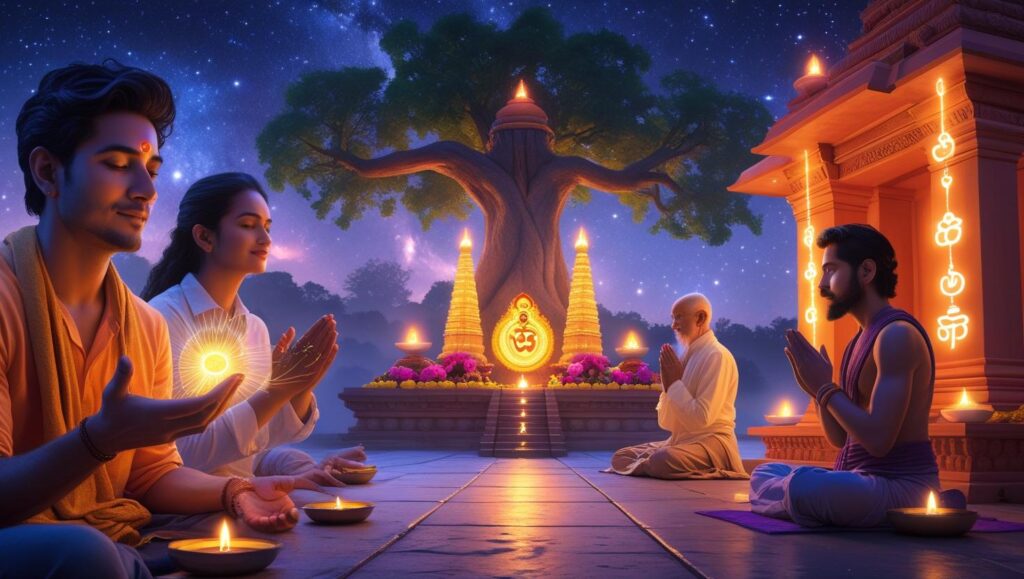
In Sanatan Dharma, yoga is more than physical exercise — it is a sacred spiritual journey. Hindu philosophy describes five main types of yoga, each representing a unique path toward self-realization and Moksha (liberation). These yogic paths are designed to suit different temperaments and personalities.
1️⃣ Karma Yoga – Path of Selfless Action 🙏
This is the yoga of duty and service, where every action is offered to the Divine without expectation.
- Taught by Lord Krishna in the Bhagavad Gita
- Focuses on action without attachment to results
- Daily responsibilities become sacred when done with dharma
- Emphasizes seva (selfless service) and surrender of ego
🪔 Perfect for those actively engaged in family, work, or society.
2️⃣ Bhakti Yoga – Path of Devotion ❤️
This is the yoga of love and surrender to God — an emotional, heart-led journey.
- Expressed through bhajans, kirtans, mantras, and puja
- Worship of personal deities like Krishna, Shiva, Durga, or Ram
- Emphasizes pure love (prem bhav) and spiritual longing
- Melts the ego through emotional union with the Divine
🎵 Best suited for those who feel deeply and express devotion through music and worship.
3️⃣ Jnana Yoga – Path of Wisdom 🧠
This is the yoga of knowledge, inner inquiry, and deep contemplation.
- Rooted in Upanishads and Advaita Vedanta
- Focus on atma-vichara (self-inquiry) and the question: “Who am I?”
- Helps to distinguish between the eternal Atman and the illusory Maya
- Leads to realization of unity with Brahman (Supreme Reality)
📚 Ideal for intellectuals, thinkers, and philosophical seekers.
4️⃣ Raja Yoga – Path of Meditation and Mastery 🧘♂️
Known as the royal path, Raja Yoga is focused on mental control and spiritual awakening.
- Based on Patanjali’s Yoga Sutras and the Ashtanga Yoga system
- Includes: yama, niyama, asana, pranayama, pratyahara, dharana, dhyana, and samadhi
- Balances ethical living, posture, breath, and meditation
- Aims for samadhi, the highest state of inner stillness and bliss
🔮 Perfect for those who seek deep inner peace through meditation and discipline.
5️⃣ Hatha Yoga – Path of Physical Discipline 🧎♀️
Often misunderstood as just stretching, Hatha Yoga prepares the body for spiritual experience.
- Combines asanas (postures), pranayama (breath), and shatkarmas (cleansing)
- Balances the body’s energy channels (nadis) and activates inner strength
- Mentioned in Hatha Yoga Pradipika and Gheranda Samhita
- Foundation of many modern yoga practices, but deeply spiritual in origin
🔥 Great for those who want to start with physical discipline and evolve spiritually.
🕊️ All Yogic Paths Lead to Moksha (Liberation)
Though the methods differ, all yogic paths lead to the same divine goal — union with the Supreme Self (Atman).
Whether you:
- Act selflessly like a karma yogi
- Surrender like a bhakta
- Reflect like a jnani
- Meditate like a raja yogi, or
- Discipline your body like a hatha yogi —
👉 The destination is liberation, peace, and realization of your true nature.
🌊 “Just as all rivers merge into the ocean, all yogic paths unite in the soul’s journey to Moksha.”
🪔 Yoga as a Tool for Self-Realization
In Sanatan Dharma, the ultimate goal of yoga is Atma Sakshatkar — self-realization.
It is not about becoming someone else; it’s about remembering who you already are — the eternal soul (Atma), beyond body and mind.
💡 When we ask what is yoga, the deeper answer is:
Yoga is a bridge between illusion and truth — ego and Atman, mind and consciousness.
🌼 How Yoga Supports Self-Realization:
- 🌫️ Helps shed false labels like “name,” “job title,” or “social identity”
- 🧘♀️ Cultivates inner silence and stillness
- 🪞 Encourages self-inquiry — “Who am I, really?”
- 🔍 Brings awareness to the present moment — the doorway to truth
- 🧘♂️ Through consistent practice, it reveals the eternal soul beneath temporary roles
📿 According to Advaita Vedanta, the soul (Atma) is not separate from Brahman, the universal consciousness.
“Aham Brahmasmi” — I am That.
And yoga is the method, the means, and the map to realize this eternal truth.
🤸♂️ Yoga vs Western Exercise Systems
In the modern world, yoga is often mistaken for a physical workout. But true yoga is not just about flexibility or fitness — it’s a holistic, spiritual science.
Let’s understand the core differences between Yoga and Western Exercise systems:
| 🔍 Feature | 🧘♂️ Yoga | 🏋️♂️ Western Exercise |
|---|---|---|
| Primary Goal | Self-realization, inner peace | Physical fitness, aesthetics |
| Origin | Vedas, Upanishads (India) | Modern science (West) |
| Mindfulness | Integral to every movement | Often optional |
| Breathwork (Pranayama) | Core practice | Rarely included |
| Spiritual Purpose | Central to all yogic paths | Generally absent |
| End Result | Unity of body-mind-soul | External strength, calorie burn |
🕊️ Yoga is not just a practice — it’s a lifestyle, rooted in awareness, inner balance, and divine connection.
It doesn’t stop at the muscles; it starts at the soul.
💬 Real-Life Tip:
Before heading to the gym, spend just 10 minutes on conscious breathing (Pranayama).
You won’t just burn calories — you’ll feel calm, centered, and clear-minded too.
✨ In Sanatan Dharma, yoga is the journey from “I am the body” to “I am the soul”.
And in that realization lies true freedom.
🪔 Yoga in Sanatan Dharma – Deepening Your Spiritual Journey
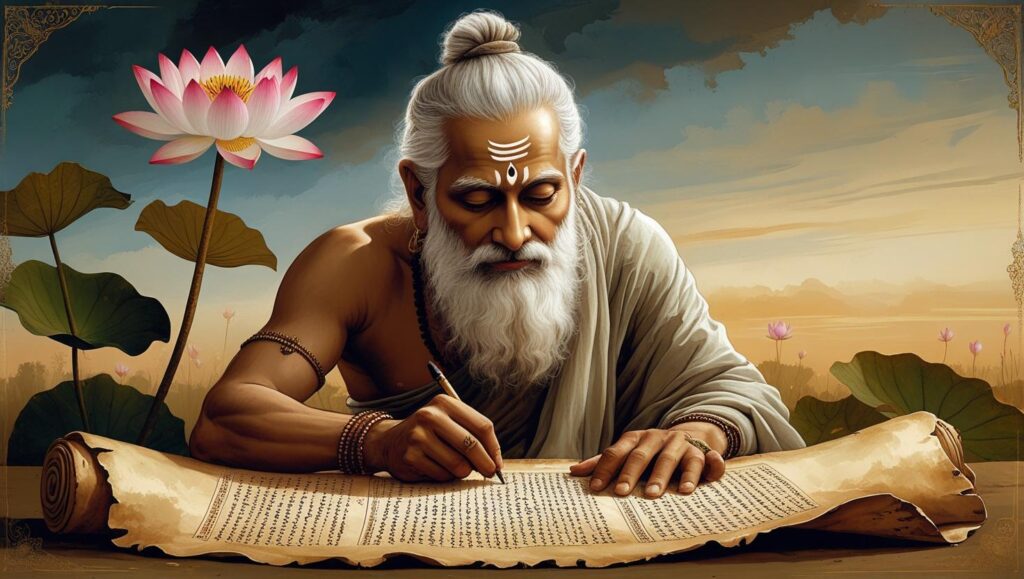
So far, we’ve explored the foundational yogic paths — Karma, Bhakti, Jnana, and Raja Yoga — as beautifully shared in the Bhagavad Gita. But the ocean of Sanatan Dharma doesn’t end there.
Let’s now dive deeper into ancient yogic scriptures, their practical teachings, and how yoga connects us to eternal Vedic truths.
📜 Ancient Scriptures on Yoga: Beyond the Gita
Sanatan Dharma offers a vast treasure of yogic texts that go beyond asanas and into the essence of consciousness. These sacred scriptures serve as practical manuals for spiritual awakening.
1️⃣ The Yoga Sutras of Patanjali 🧘♀️
Written by Maharishi Patanjali, the Yoga Sutras are the most comprehensive and structured yogic text in Hindu philosophy.
They define yoga as:
“Yogas chitta vritti nirodhah” – Yoga is the cessation of the fluctuations of the mind.
🌿 Patanjali outlines Ashtanga Yoga (Eight Limbs of Yoga) — a clear roadmap to liberation (Kaivalya):
- Yama – Social ethics (non-violence, truth, non-stealing, celibacy, non-possessiveness)
- Niyama – Personal discipline (cleanliness, contentment, tapas, self-study, surrender to Ishwara)
- Asana – Mastery of physical posture
- Pranayama – Control of breath and prana
- Pratyahara – Withdrawal from sense distractions
- Dharana – One-pointed concentration
- Dhyana – Deep meditation
- Samadhi – Blissful absorption in Divine consciousness
🕯️ The result? Kaivalya – absolute freedom from ignorance, karma, and suffering.
2️⃣ The Upanishads 📚
The Upanishads are philosophical scriptures that form the core of Vedanta. They go beyond rituals and focus on Atma-Brahman unity — the central idea of non-duality.
🪷 In Upanishadic yoga:
- Yoga is inner transformation, not physical performance
- The seeker dives into the truth of the Self
- Liberation is seen as realization, not attainment
A beautiful analogy from the Katha Upanishad:
The body is the chariot, the senses are the horses, the mind is the reins, and the intellect is the driver. Only when the driver is wise does the soul reach its destination – Moksha.
🧠 This symbolic approach teaches mind control, discrimination, and conscious living — the essence of yogic life.
🔁 The Cyclical Nature of Life and Yoga
According to Sanatan Dharma, life follows the cycle of birth, death, and rebirth (Samsara).
This cycle is governed by karma and continues until the soul attains freedom.
🌸 Yoga becomes the sacred tool to transcend this cycle:
Without Yoga:
- The soul remains trapped in desires, attachments, ego, and suffering.
With Yoga:
- The soul awakens, detaches, and dissolves its karmic bonds
- Consciousness expands
- Liberation (Moksha) becomes not just a hope — but a lived reality
🪷 Yoga doesn’t teach escape — it teaches elevation.
Through awareness, discipline, and devotion, we rise above the temporary and touch the eternal spark within.
✨ This is the true depth of yoga in Sanatan Dharma — not a trend, but a timeless path to freedom.
“That which never changes is the Self. Yoga is how we realize it.”
🌿 Connecting Yoga with Dharma, Artha, Kama, and Moksha
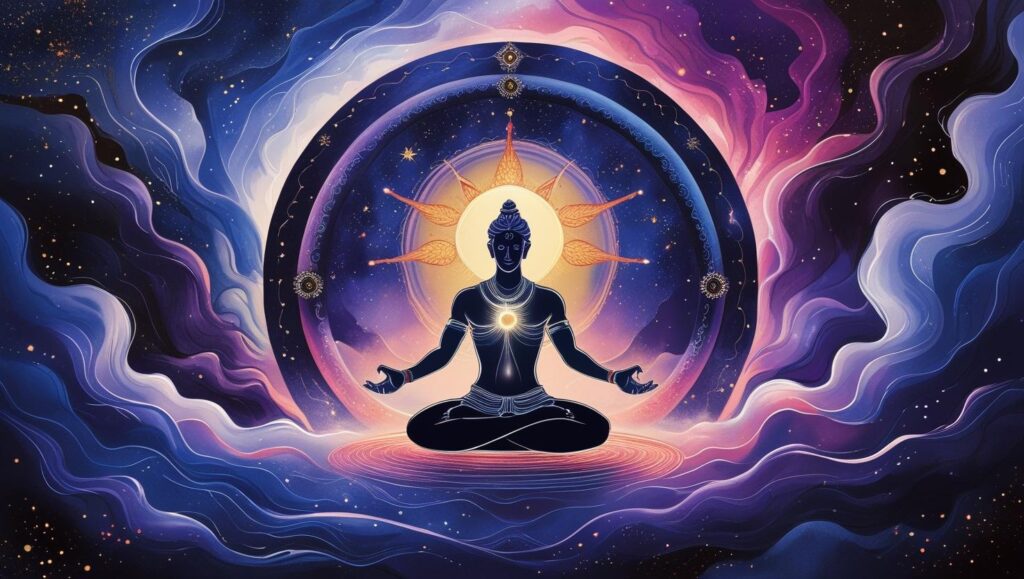
Sanatan Dharma beautifully balances life through the four Purusharthas — the four aims of human existence:
- Dharma – Righteous duty and moral living
- Artha – Prosperity and right livelihood
- Kama – Legitimate enjoyment and desires
- Moksha – Final liberation of the soul
🧘♂️ Yoga supports all four Purusharthas:
- ✅ Encourages ethical living (Dharma) through Yama & Niyama
- 💪 Maintains body and mind fitness for life goals (Artha)
- 🌸 Brings mindfulness to pleasures and joy (Kama)
- 🕊️ Ultimately leads toward liberation and detachment (Moksha)
📿 Yoga as a Daily Spiritual Sadhana (Practice)
In Sanatan Dharma, yoga is not a temporary hobby or New Year’s resolution — it is a lifelong sadhana, a sacred discipline.
Here’s how to live yoga every day:
🌄 Wake up in Brahma Muhurta (4 AM – 6 AM) for meditation and mantra chanting
🧘♀️ Practice Asana and Pranayama to balance prana (life force)
📿 Chant divine mantras: Om Namah Shivaya, Hare Krishna, or Gayatri Mantra
📖 Study scriptures like the Bhagavad Gita, Yoga Sutras, or Upanishads
🤲 Perform Seva (selfless service) to dissolve ego and awaken compassion
🪔 These actions slowly transform you from a body-bound identity to a soul-aware being.
💭 Modern Misconceptions About Yoga
Today, yoga is often misunderstood as:
🚫 A flexibility challenge
🚫 A fitness trend
🚫 A secular or commercial practice
But this is a diluted version of true yoga.
🌿 Yoga is not about how long you hold a pose. It’s about how deeply you connect with your soul.
Without Sanatan Dharma, yoga loses its spiritual roots — like a tree without soil.
🌅 Yoga for Inner Awakening – In Modern Life
Even in today’s fast-paced world, yoga remains your doorway inward:
📱 Amid screen addiction – Pratyahara teaches sensory withdrawal
⏳ Amid time pressure – Dhyana reconnects you with stillness
🎯 Amid ambition and chaos – Karma Yoga reminds you to serve selflessly
🧘 Yoga is not an escape from life. It is your embrace of the eternal within life.
🔚 Conclusion – Yoga Is Your Return to the Eternal
In the Sanatan worldview, yoga is not optional — it is essential for a meaningful, soul-connected life.
🙏 It is the sacred bridge between the self and the Supreme, between the temporary and the timeless.
🕉️ “Yogah karmasu kaushalam” – Yoga is skill in action (Bhagavad Gita 2.50)
✨ Practice with devotion.
✨ Live with awareness.
✨ Walk the path with courage.
📖 Sacred Verses from Bhagavad Gita on Yoga
Shri Krishna’s divine teachings offer the deepest spiritual meaning of yoga:
🕉️ “Samatvam yoga uchyate” (BG 2.48)
Equanimity is Yoga. Stay balanced through all ups and downs.
🕊️ “Yogī yukto viśuddhātmā vijitātmā jitendriyaḥ…” (BG 6.15)
The yogi, with pure self, controlled mind and senses, becomes free.
🌞 “Tasmād yogī bhavārjuna” (BG 6.46)
Become a yogi, O Arjuna! Among all, the yogi is most united with the Divine.
🪔 True yoga is not about doing. It is about being.
🌄 A Yogic Daily Routine (Dinacharya) Rooted in Sanatan Dharma
Here’s how to incorporate yoga into everyday life:
| 🕰️ Time | 🌞 Activity | ✨ Purpose |
|---|---|---|
| 4 AM – 6 AM | Wake, bathe, chant mantras | Activate spiritual clarity |
| 6 AM – 7 AM | Asana & Pranayama | Balance body and prana |
| 7 AM – 8 AM | Japa or silent meditation | Build inner stillness |
| Daytime | Work with Karma Yoga mindset | Serve without ego |
| Evening | Lamp lighting, sacred reading | Reconnect with dharma |
| Before sleep | Prayer or short meditation | Cleanse mind and reset |
🪷 A yogic life doesn’t demand renunciation. It asks for sacred intention.
🔬 Modern Science Validates Yoga’s Ancient Power
What Rishis taught thousands of years ago, science is now proving:
🧠 Mental Health
- Reduces stress hormones like cortisol
- Boosts serotonin, dopamine — natural happiness
- Used in therapy for depression, anxiety, PTSD
❤️ Physical Health
- Lowers blood pressure
- Improves immunity, sleep, digestion
- Enhances flexibility and vitality
🫀 Spiritual & Emotional Health
- Yogis show higher alpha brainwaves (calm + focus)
- Increases compassion, mindfulness, and clarity
🧬 Yoga is not just spiritual. It’s biological transformation.
🔥 Yoga in Kaliyuga – Urgent, Not Optional
In today’s age of Kaliyuga, we face:
🌐 Constant distractions
💰 Material obsession
🧠 Rising anxiety and disconnection
⚠️ In such times, yoga is not luxury — it is survival for the soul.
Yoga is your inner fire. It burns ignorance, illusion, and ego.
🧘 Final Thoughts – Yoga as Your Life’s Dharma
Sanatan Dharma doesn’t ask you to wear robes or beads.
It invites you to:
- Be a Karma Yogi in your work
- A Bhakti Yogi in your heart
- A Jnana Yogi in your thoughts
- A Raja Yogi in your self-mastery
💫 Yoga is the spiritual technology of Sanatan Dharma.
It takes you from ego → Atman, noise → stillness, illusion → truth.
🙏 What to Do Next?
✅ Start with 10 minutes daily
✅ Read 1 Gita verse each morning
✅ Practice silence, Seva, surrender
✅ Join a satsang or yoga community
✅ Share this with family & friends
🕉️ Yoga is not something to believe in. It is something to become.
📌 Bookmark this guide. Print it. Live it.
🔗 Stay connected with SanatanYug.com — your spiritual home for timeless truths.
🚩 Jai Sanatan Dharma! Jai Yogeshwar Shri Krishna!
📌 FAQs on Yoga in Hinduism & Sanatan Dharma 🧘♀️🕉️
What is the origin of yoga in Hinduism?
Yoga originated in ancient India and is deeply rooted in Hinduism. Its earliest references are found in the Rigveda, followed by detailed teachings in the Upanishads and the Bhagavad Gita. Over time, sages like Patanjali codified yoga into systems for physical, mental, and spiritual growth. It’s more than exercise — it’s a path to the divine.
Is yoga only about physical postures (asanas)?
No, asanas are just one part of yoga. Traditional yoga includes eight limbs: yama, niyama, asana, pranayama, pratyahara, dharana, dhyana, and samadhi. These work together to purify the body, calm the mind, and lead the soul toward liberation (moksha). In Hinduism, yoga is a complete lifestyle.
What are the different types of yoga in Hindu philosophy?
There are mainly five traditional paths:
🔹 Karma Yoga – Selfless action
🔹 Bhakti Yoga – Devotion to God
🔹 Jnana Yoga – Wisdom and self-inquiry
🔹 Raja Yoga – Meditation and mind control
🔹 Hatha Yoga – Physical and breath discipline
Each suits a different nature or temperament.
Who is the father of classical yoga?
Maharishi Patanjali is considered the father of classical yoga. He wrote the Yoga Sutras — a text that systematized the philosophy and practice of yoga into 196 aphorisms. His framework of the Eight Limbs (Ashtanga Yoga) is still followed globally and is central to Raja Yoga.
Is yoga mentioned in the Bhagavad Gita?
Yes, the Bhagavad Gita is one of the most important scriptures that describes yoga in depth. Lord Krishna teaches Arjuna about Karma Yoga, Bhakti Yoga, and Jnana Yoga as ways to reach the divine. The Gita emphasizes balance — doing your duty without attachment is also yoga.
How does yoga help in self-realization?
Yoga trains the mind to go inward. Through meditation and pranayama, we begin to shed the ego and false identities. We become more aware of our true self — the Atma. According to Advaita Vedanta, this self is none other than Brahman. Yoga is the bridge that reveals this truth.
What’s the role of breath in Hindu yogic practices?
Breath is the life force (Prana). In yoga, controlling the breath through pranayama calms the nervous system, strengthens the mind, and awakens spiritual energy. Unlike Western workouts, breath is central to yoga — it connects body, mind, and soul. 🙏
How is yoga different from Western exercise systems?
Yoga focuses on inner balance, breath, and self-realization. Western exercise systems mostly focus on weight loss, strength, or cardio. Yoga also improves flexibility and stamina but its real goal is spiritual awakening and harmony. It’s about awareness, not abs. 🧘♂️ vs 🏋️♂️
Can anyone practice yoga, even if they are not Hindu?
Absolutely. Yoga is universal. While it has Hindu roots, its wisdom is open to all humanity. Anyone who wants to grow spiritually or mentally can practice yoga. You don’t need to change your religion — just your mindset toward inner growth.
What are the Yoga Sutras and why are they important?
The Yoga Sutras by Patanjali are 196 concise verses that outline the theory and practice of yoga. They include ethics, discipline, breath control, and meditation. It’s like a user manual for mastering your mind and reaching samadhi — the ultimate union with divine consciousness.
What is the difference between Hatha Yoga and Raja Yoga?
Hatha Yoga emphasizes physical postures and breath control — it prepares the body for meditation. Raja Yoga, on the other hand, is about mental mastery through meditation and the eight limbs. Hatha is more external; Raja is more internal. Both complement each other.
Is yoga considered a form of worship in Hinduism?
Yes, in a broader sense. Bhakti Yoga especially is a devotional form of yoga involving prayers, bhajans, and surrender to God. Even Karma Yoga — doing duties without ego — is seen as worship. Yoga aligns your life with divine will, making every act sacred. 🙌
Does yoga lead to moksha (liberation)?
Yes, that’s the ultimate aim. Yoga purifies the mind, burns karmas, and reveals the truth of the self. When the Atma realizes it is not separate from Brahman, the soul breaks free from samsara (birth–death cycle). This state of complete freedom is moksha.
How do the Upanishads describe yoga?
The Upanishads speak of yoga as the path to unite Atman with Brahman. It’s about silence, deep meditation, and self-realization. For example, the Katha Upanishad compares the body to a chariot — only when the intellect drives it well can the soul reach liberation.
Can modern yoga still be spiritual?
Yes, if practiced with the right intention. Even if you begin with asanas, you can gradually include breathwork, mantras, and meditation. When done mindfully, modern yoga becomes a doorway to your inner self. It’s not about how flexible your body is — it’s about how still your mind becomes. 🌼
🙏 Message for Our Readers
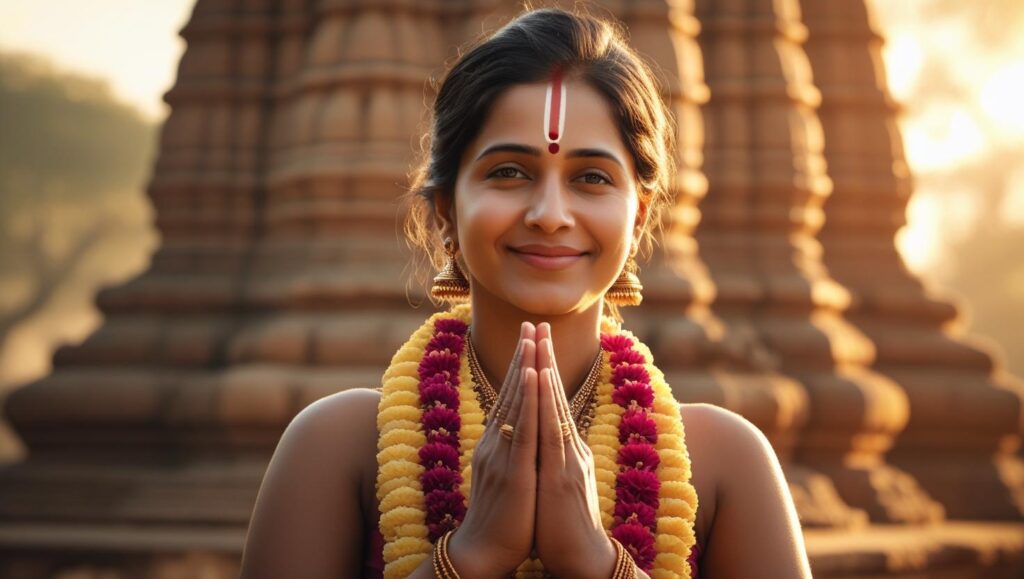
Dear seeker of truth 🌸,
If you’ve come this far, it shows that your heart is open and your soul is ready. Yoga is not just a physical act — it’s a return to our divine roots. Whether you’re on the path of devotion, wisdom, action, or meditation, Sanatan Dharma embraces your journey with open arms. 🕉️
May this guide inspire you to go beyond the yoga mat and live with awareness, harmony, and dharma in your daily life.
Remember — real yoga begins within.
🌟 Conclusion: Yoga Is Sanatan. Sanatan Is Eternal.
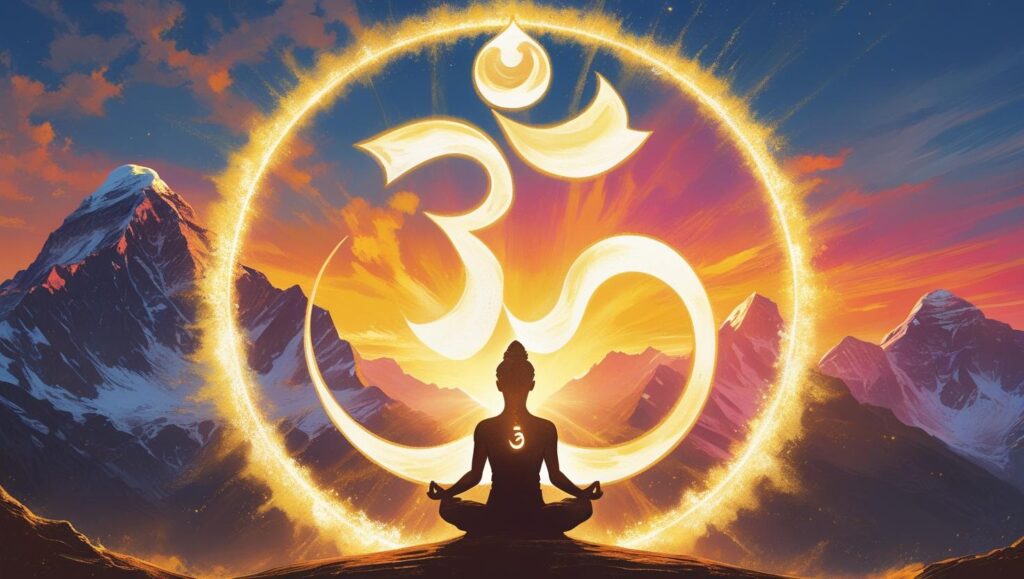
Yoga is not a trend. It is timeless wisdom passed down from Rishis, recorded in the Vedas, Upanishads, and the Gita — offering a roadmap to Moksha (liberation).
In Sanatan Dharma, yoga is the bridge between Jivatma (individual soul) and Paramatma (universal soul).
You are not just your body, mind, or name — you are eternal consciousness.
And yoga is the mirror that helps you realize that truth. 🪞✨
No matter where you start, when you walk the path of yoga with sincerity, you are walking toward your highest self. 🌺
⚠️ Disclaimer
This blog post is written for spiritual and educational awareness only. It does not serve as a medical or professional health guide. Before starting any intense yogic practice or pranayama routine, especially if you have health conditions, always consult a trained yoga guru or medical practitioner.
SanatanYug.com respects all spiritual traditions. This article reflects the Sanatan Dharma perspective.
📣 Join Our Sanatan Dharma Community
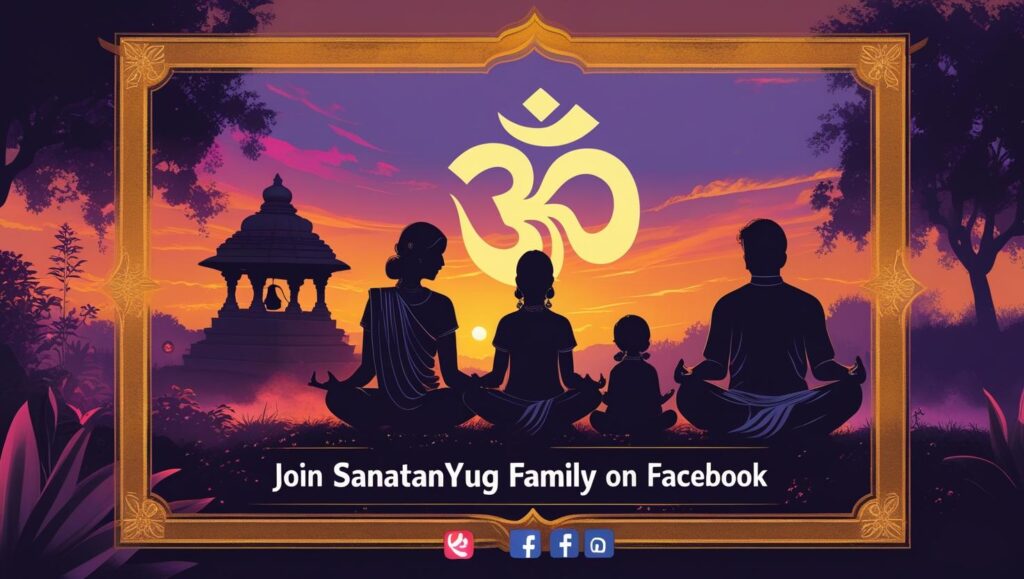
If this article resonated with your soul, we warmly invite you to be part of our growing online community:
👉 Follow our Facebook Page for daily Sanatan insights, quotes, and videos
👉 Join our Facebook Group to connect with fellow seekers, share your journey, and deepen your understanding of Dharma
Let’s revive the eternal wisdom of Bharat 🇮🇳 — together! 🌿✨




